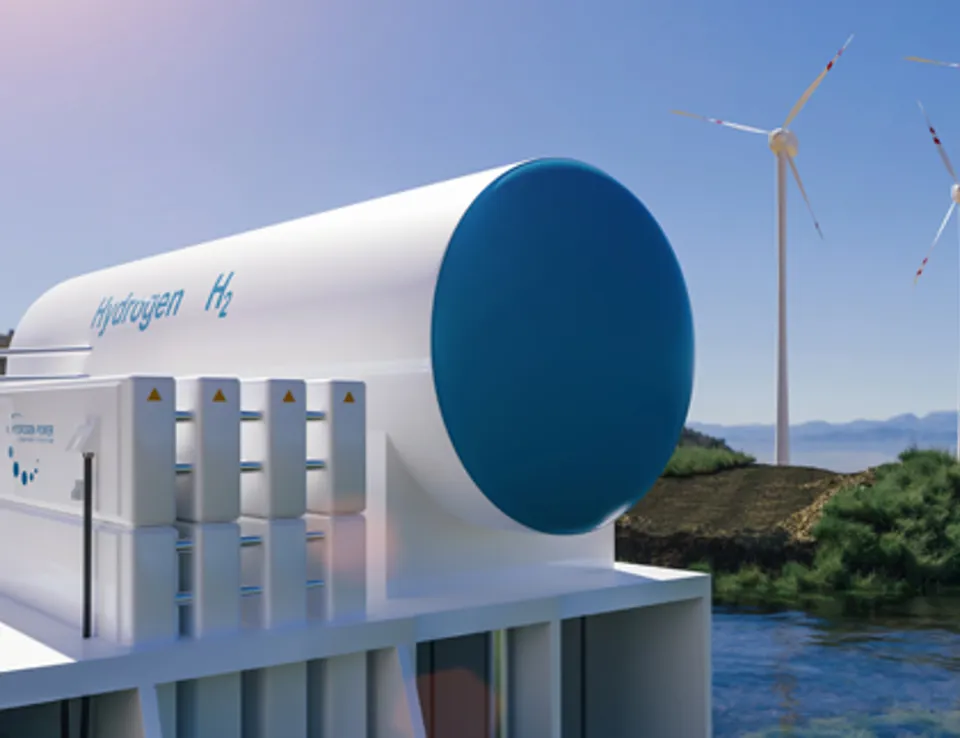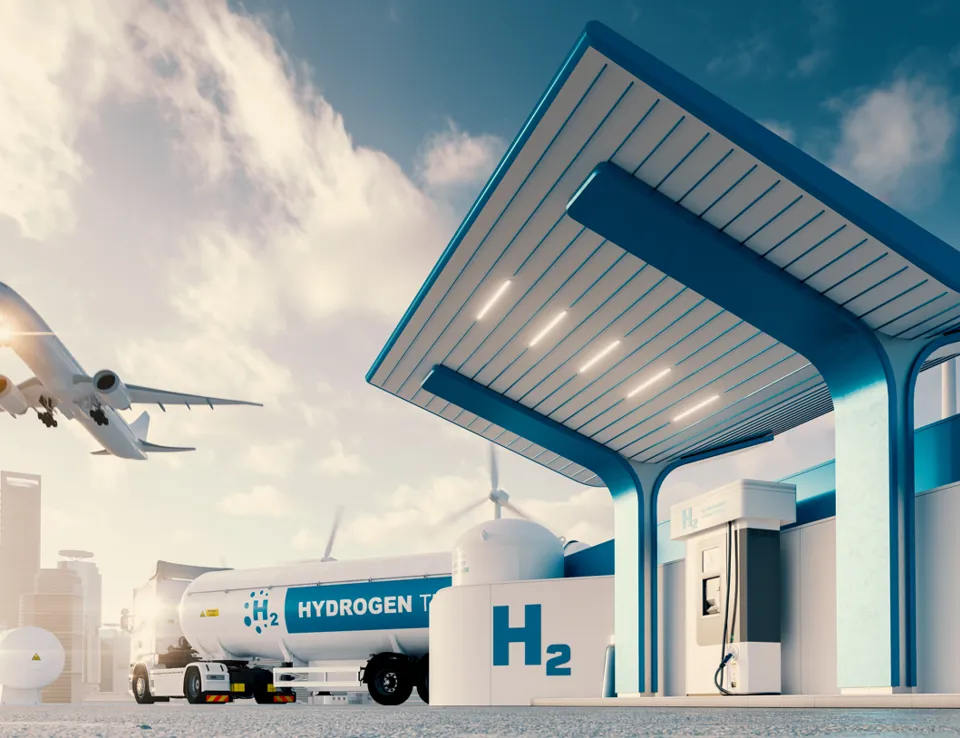
Life cycle of hydrogen fuel cell vehicles
29 Jan 2021
In this Q&A, Jane Patterson, a consultant from the Ricardo Technology Strategy Team, discusses the life cycle assessment of hydrogen fuel cell vehicles and the factors that influence their environmental impact, such as the hydrogen production pathway.
Jane had an interest in hydrogen since way before she joined Ricardo. She has been involved in numerous techno-economic hydrogen projects at Ricardo since 2005. She also represents Ricardo on the Industrial Advisory Board of H2FC SUPERGEN, funded by the Research Councils UK Energy Programme, as part of the government’s Sustainable Power Generation and Supply initiative. Her current focus is on ensuring we use hydrogen and fuel cell technology to achieve net zero without shifting environmental burdens to other parts of the value chain.
Q: How does a hydrogen fuel cell vehicle’s carbon footprint compare with battery electric vehicle?
Jane Patterson:
Both battery electric and fuel cell vehicles are classed as ‘zero emission vehicles’ because they produce zero tailpipe emissions at the point of use. However, the next question people ask is ‘but what emissions result from the production of electricity?’ and ‘what about the hydrogen?’ For BEVs, this is quickly followed by ‘and what about the production of the battery pack?’, and ‘what happens to the battery at end-of-life?
For hydrogen fuel cell vehicles, we’re only just starting to receive the same type of questions. We need to think about how we compare the environmental credentials of ‘zero emission’ transport. ‘While a type of transport might be zero emission at the point of use, it’s not truly zero-emissions if you consider the complete life cycle holistically.
There are companies, and VW is one example, that are putting together a glide path for making a battery electric vehicle net zero across its complete life cycle. Some vehicle manufacturers are already on a journey to get to that point. I haven’t yet seen the same for a hydrogen fuel cell vehicle, and as a broader engineering community, we should be thinking about this. I’d be interested to hear from anyone that’s already working on this.
Q: How does the way hydrogen is generated affect the carbon footprint of a hydrogen fuel cell vehicle?
Jane Patterson:
How hydrogen is made, its production pathway is one of the most significant input variables for the vehicle’s life cycle assessment. Hydrogen can be generated in many different ways. Currently, most hydrogen production comes from steam reforming of natural gas. However, since this method uses fossil fuels, it’s not carbon neutral unless you can combine it with carbon capture and storage (CCS) technology.
Another option is electrolysis – using electricity to split water into hydrogen and oxygen. For this hydrogen pathway, the environmental impact is strongly dependent on the electricity used. Electricity from renewable sources such as wind and solar helps create low carbon hydrogen. However, if you use the average electricity grid mix in Europe, although this includes renewables, it’s not completely renewable. It still uses some fossil fuels, which impacts the carbon intensity of the hydrogen produced.
There are many other ways to make hydrogen, which is one of the things I love about using hydrogen as an energy vector. The Royal Society has a good summary of pathways to produce hydrogen. Personally, I’m interested in the numerous bio-based methods for producing hydrogen as possible solutions for the future.
Q: If you were to measure the carbon footprint of a hydrogen fuel cell vehicle, what should you take into consideration?
Jane Patterson:
As we’ve just discussed, one of the key considerations is the hydrogen production pathway and its associated carbon emissions.
Like for any life cycle assessment, you need to consider the production of the vehicle and its components, as well what happens at end-of-life. We often refer to this as the ‘embedded environmental impact’. Our most recent LCA comparison of FCEV and BEV shows both have higher embedded GHG emissions from vehicle production than a conventional gasoline vehicle.
Q: What’s your view on hydrogen fuel cell vehicles as a low carbon option for road transport?
Jane Patterson:
There are lots of different options for hydrogen, which is why it is being very closely looked at as one of the multitudes of technology solutions that we're going to need if we are going to hit our net-zero targets. There is much discussion about the use of hydrogen for commercial vehicles and hydrogen already has a long history with buses in trials in Europe. There are different bus routes and journeys that could be better for a hydrogen fuel cell bus or a battery electric bus. There are different pros and cons, depending on the type of vehicle and the journey. It’s an interesting option for trucks as we need to decarbonise the way we manage logistics and freight. For long distance heavy duty truck applications, a battery electric truck would require a very large battery pack and can take a long time to charge, so there could potentially be some options to use hydrogen for those use cases. I think there are still many challenges to be resolved, but I think it will have a place.
Q: How do you think hydrogen storage will affect the use of hydrogen fuel cell vehicles in the future?
Jane Patterson:
Over the last 5 years, I haven’t seen the same kind of cost reduction glide paths for hydrogen storage as I have seen for the hydrogen fuel cell system. A high pressure, compressed gas tank, plus associated valves and regulators and pipework is expensive. We’re waiting to see where a technology breakthrough is going to come so that we can get parity and reduce environmental impact.
Q: What’s your view on the future of hydrogen fuel cells and how they will be used?
Jane Patterson:
Hydrogen fuel cells already have some successful markets such as forklift trucks in North America and combined heating and power units in Japan. I think it will have more success stories to come, and if you are a fuel cell technology provider, it’s important to understand your market drivers, what’s happening with legislation, policies, competitors and how technology is developing. It’s also worth benchmarking hydrogen as a solution against alternatives. For example, there are pockets of areas in Europe where a hydrogen fuel cell vehicle is looking more attractive from a carbon footprint point of view because the region has high carbon electricity. However, the window of opportunity may only be 10 or 15 years, while those regions decarbonise their electricity grid. It’s vital that whatever we use hydrogen for, we think about it holistically and think about the entire hydrogen supply chain. Otherwise, we aren’t providing benefits to the planet.
Q: Are there any barriers to hydrogen being used as an alternative fuel source?
Jane Patterson:
Yes, there needs to be an infrastructure in place for a hydrogen vehicle to be refuelled. If you are a fuel provider, you’ll need to be sure that there will be demand from hydrogen vehicles before the infrastructure is put in place. Europe are revising the alternative fuels infrastructure directive, and it will be interesting to see what different member states do.
Q: How can you help organisations considering hydrogen as a future fuel source to really achieve net-zero?
When our clients want to think holistically about the technology decisions they are making, we can support the whole journey. For example, it could begin by gaining a better understanding of the wider technology landscape and the forces shaping future development, such as the European Green Deal and its implications.
Conducting a life cycle assessment of the technology, even if it is still at an early development stage, will help identify the environmental ‘hot spots’ to target, maximising the decarbonisation benefits from the technology investment.
LCA can also be applied at the macro-level, to compare technology options and future scenarios. Such as the relative impact of different hydrogen production pathways and primary energy sources, and how these can contribute to achieving net zero.




 Follow Ricardo plc for regular updates
Follow Ricardo plc for regular updates




